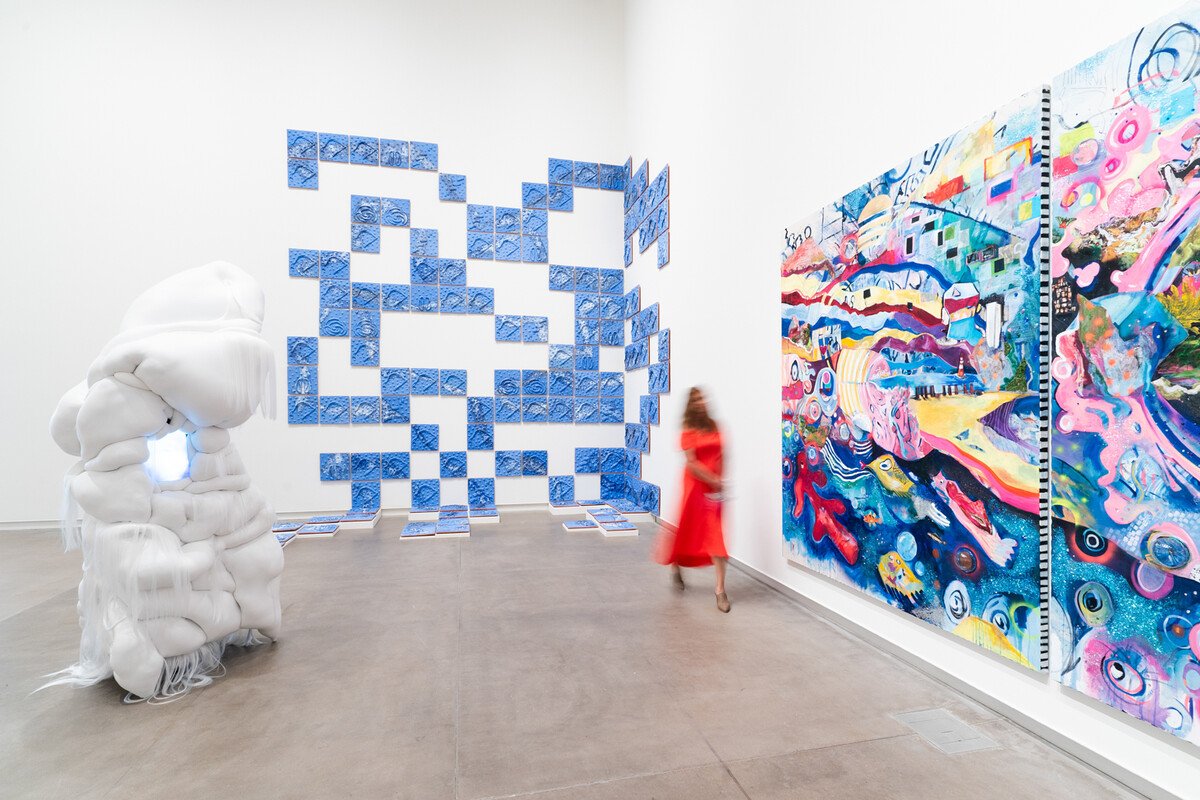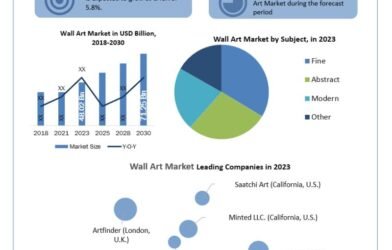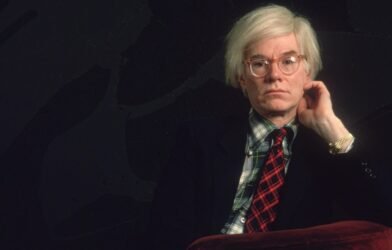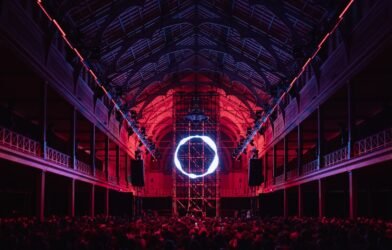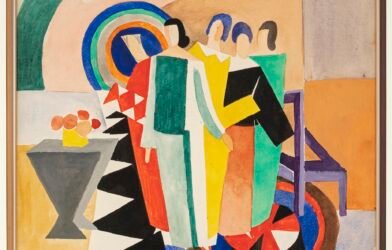Slingshot: 2024 MFA in Visual Art thesis exhibition features the culminating work of nine artists who graduated this spring from the Graduate School of Art in the Sam Fox School of Design & Visual Arts at Washington University in St. Louis.
The exhibition title holds a variety of associations for the candidates, including references to childhood and play, gravity, movement, tension, and release. The artists explore such themes as the body, identity, the built environment, and technology through a range of aesthetic practices and mediums that include collage, drawing, painting, sculpture, and photography.
Emily Elhoffer, an interdisciplinary artist whose work is inspired by hidden forms and processes of the body, says their Self-Portrait is a result of “my research involving the generation of imagined, or virtual bodies to discuss topics within technology and contemporary feminist discourse.”
Jordan Geiger is a multi-disciplinary artist, musician, and thinker who explores the intersection of the sacred and profane, the invisible and visible, and traditional mystical practices and contemporary life. Geiger’s The Buddha Maitreya merges an Eastern sensibility with Midwestern folk traditions.
Joni P. Gordon defines her work as artivism (art activism), exploring racism, colorism, and the possibilities of healing through art. [W]hole, explains Gordon, “confronts displacement, colorism, my ancestry, and racial identity. I question both the possibility and one’s attempt to heal from the psychological scars caused by racial discrimination.”
Mad Green is an interdisciplinary, Queer artist who makes work about themselves. As they reflect on their childhood inside the ring, their work tangles with the dichotomy between toughness and tenderness. “When experiencing my work, I hope Queer people are motivated to lean into their rage,” Green explains.
Sophia Hatzikos’s work reimagines elsewhere by translating place. Connecting human experience with landscape, she questions current practices and acceptance of infrastructural systems. Hatzikos’s installation Absence is constructed of 141 hydraulic press molds of terracotta relief tiles, a project made possible via the time, energy, and technical expertise of over forty members of the community.
Micah Mickles is a multi-disciplinary artist from St. Louis, compelled by photography, printmaking, and graphic design. Whether working within the realm of digital or analog processes, he finds collage, color, and the manipulation of space to be of profound interest and commonplace in his practice. Mickles says Rayfield’s Chamber “delves into the themes of loss, memory, and healing through preservation. It was inspired by the sudden passing of my father, which left me without the chance to say goodbye.”
Sarah Moon’s mixed media canvases present a girly, escapist playscape of unapologetic ornamentation; fuchsias, blues, and acid greens freak out in layered brush strokes, drips, and swirling orbs. Moon says, “I hope people are filled with wonder and transported to another space. In our present time, we need art, more than ever, that apprehends our present situation, but we also desperately need art that suspends reality and gives us a mental haven to recharge and escape.”
Samantha Neu’s work “explores the various facets of being a material body — erotic, intimate, grotesque, fragile, transient, humorous,” she explains. Homesick is a looming, larger-than-life sculpture constructed primarily out of insulation foam and resembling a tongue. “While the viewer is not allowed to touch this sculpture, there is an imagined gesture,” Neu says. “[The viewer] can think of how their body would climb or slide on the sculpture, drawing awareness to their body’s presence in this experience.”
Lynne Smith is an artist, designer, and educator. She examines the complexity of entanglements by holding hands with material. While her work spans mediums, she finds profound grounding for her practice and spirit within the architecture of the warp and weft. Of Every One and W14, W15 (whatever it takes), Smith says, “I hope viewers will arrive as they are and feel open to slow looking,” Smith says.
The exhibition is organized by Leslie Markle, curator for public art at the Mildred Lane Kemper Art Museum.

